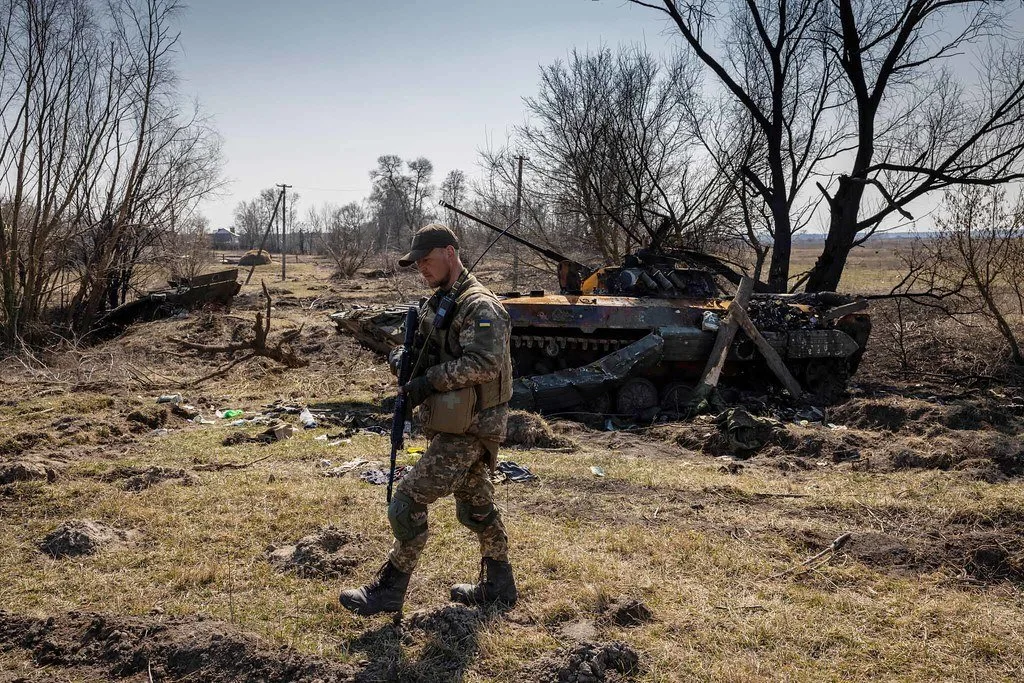What’s Next in Military Aid for Ukraine?
Initial predictions regarding the ongoing war in Ukraine speculated that Kyiv would be captured within a few weeks of Russia’s invasion. However, nearly a year from the start of the invasion, Ukraine’s capital city stands scarred but independent. How did Ukraine manage to defy expectations and continue to hold off the Russian assault? A fierce and committed Ukrainian public, an unexpectedly flawed Russian military, and huge amounts of foreign aid are some of the factors that have helped keep Kyiv standing.
In 2022, the US alone sent nearly $50 billion (£41.6 billion) in aid to Ukraine, part of over €110 billion (£97.7 billion) in the form of financial, humanitarian, and military aid being sent to Ukraine. In several speeches appealing to the West for more aid, Ukrainian President Volodymyr Zelensky has credited foreign military equipment sent to Ukraine as key to pushing back Russian forces. The foreign military equipment in question includes advanced missile defence systems, drones, and artillery.
Controversy and debate surrounds the conversation of sending military equipment to Ukraine, as Western leaders are wary of providing Ukraine with materials which would allow the country to strike deep inside Russian territory. Western countries fear that an attack on Russia would escalate the war, potentially provoking a nuclear response and thus triggering a war with the NATO members. This was the answer given when Americans and Germans refused to send tanks to Ukraine.
Germany wanted to avoid being the only country to send advanced tanks to Ukraine. Germany’s Leopard 2 tank is one of the world’s most high-tech tanks, and highly sought after by Zelenksy for the role they could play in breaking Russian lines. Similarly, the US held off on sending its M1 Abrams tanks for several months, citing that they would be too hard for Ukrainian troops to maintain. Although some allies of Germany possess Leopard tanks, they could not send them until Germany did so. It is feasible that Germany did not want to be the first country to send tanks to Ukraine, and likely that German Prime Minister Olaf Scholz wanted to wait for the US to send tanks first.
The debate about sending tanks was revived in January when 150,000 Russian troops were mobilised for an offensive. In a response to the mobilisation, Germany reversed its no-tank policy by announcing they would send 14 Leopard tanks to Ukraine, thus opening the door for its allies to send more. Soon after the announcement, the US followed suit, with the approval of 31 Abrams tanks for Ukraine in addition to a speech from President Biden in which he pledged his support for Ukraine and praised the unity of those standing up against Russia.
The tanks have not ended Zelensky’s quest for aid, nor will they lead to the end of the war. More is needed to resist Russian troops, especially when some European countries who have pledged to send Leopard tanks to Ukraine have been slow in delivery. On his trip to the UK, Zelensky made a request for increased aerial support for the Ukrainian army. Like the debate surrounding sending tanks, the conversation around sending fighter jets to Ukraine also stirs up controversy: it could appear as an escalation, perhaps on an even greater level than sending tanks. Jets would allow Ukraine to act more offensively and strike deeper within Russian territory than ever before.
Russia’s new offensive is vital for the continuation of their war effort: they need something to show for the war and may have their eyes set on capturing the Donetsk and Luhansk regions. As the shelling of Ukrainian cities continues, Russian forces are expected to try and make slow gains to grind down Ukrainian forces. Though German and American tanks will be valuable tools in helping Ukraine endure the potential assaults, the tanks alone may not be enough.
Some Ukrainian officials are sceptical of the capabilities of the new Russian offensive: the once-feared Russian military has appeared to many to be a paper tiger. Nevertheless, the offensive is alarming, and Zelensky has emphasised a potential aerial assault from Russia which, considering Russia’s aircraft inventory and capabilities, could be devastating. Therefore, the West should do all it can to improve Ukraine’s aerial capabilities.
Along with the continuing of tight sanctions on Russia and the financial support for Ukraine, Western powers should prepare to send jets to Ukraine. This means helping to train Ukrainian pilots, as the UK is doing, and preparing to send planes in order to avoid the potential inefficiencies of the tanks provided. Ukraine has succeeded so far with a heavy reliance on Western aid. The Russian military is powerful, but it is getting weaker as the war drags on. It is vital that the West increases support for Ukraine in order for the country to hold off Russia in what has proven to be a much longer war than many expected.
Image Courtesy of Alan Wilson via Flickr, © 2016 some rights reserved.
The views and opinions expressed in this article are those of the author and do not necessarily reflect those of the wider St Andrews Foreign Affairs Review team.



